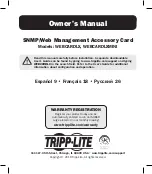
Event Settings parameters
Digi TransPort User Guide
590
Other fields
In addition to the required fields described above, the header section of an email can also
contain one or more optional fields. Many such fields are defined in the relevant RFCs, but there
are some fields the router handles a little differently ,as described below. The router inserts
other fields as necessary if it is required to send attachments with the email.
Reply To
If the router discovers this field is not present in the email template, it inserts this field into the
header. The string used for this field is the one configured by the
smtp 0 reply_to
CLI
command (or the use
Reply To
address parameter in the
Configuration > Alarms > SMTP Account
web page). This allows for different reply
addresses, and a simple way of using the same (easily configurable) reply address for all
emails.
Date
If this field is present in the header, the router inserts the current date and time into the
header. The date and time are values local to the router and do not contain any time zone
information.
Body section
The body section can include any text. This text is parsed for any function calls that may be
present. Function calls must be enclosed between
<%
and
%>
. These sequences are substituted
by text resulting from the function call. The following functions may be used:
Function
Description
TimeSmtp();
Inserts the router’s date and time.
serial_number();
Inserts the router’s serial number
Smtpip();
Inserts the IP address of the router as seen by the SMTP server during
transmission
email_event()
Inserts a formatted description of the event that caused the email
transmission.
Smtpid()
Inserts the router ID for this device as configured by the
Router
Identity
field in the
Configuration > System > Device Identity
web
page, or the
cmd 0 unitid
CLI command.
pppip(“instance”);
Inserts the IP address for a specific PPP instance, where instance is the
PPP instance number.
















































